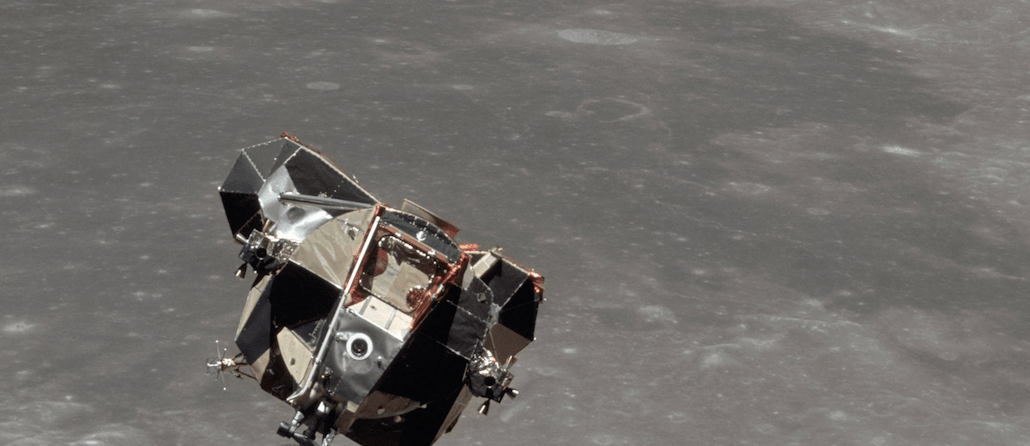What brands can learn from this emotional virtual reality mission to space

It must be the virtual moondust, because there is an Oculus Rift space simulation that is getting some people all teary-eyed. The virtual reality experience is based on the Apollo 11 moon landing, and it caused one grown man to cry because he was awestruck.
The YouTube video of the reaction, titled “Tears of Joy,” has had 188,000 views, demonstrating that the rise of virtual reality has the potential to connect people with experiences in deep ways. The unidentified man in the video was the father of one of the backers of the program, who helped fund it on Kickstarter. He was moved by the VR demo because it was as close as he could ever get to space, a childhood dream growing up in the 1960s during the time of the original lunar program.
The Apollo 11 virtual tour launches people into space, sending them to the moon. There have been other reaction videos that show people getting emotional from the trip, even if it was just simulated.
“I have made the experience to have a big emotional impact using music to really heighten the emotion of users mixed with real audio from the mission,” said David Whelan, the creator of the Apollo 11 demo. “To have a successful anything, you need your users to have some type of feeling toward the message you’re trying to get across.”
Whelan, CEO of Immersive VR Education, designed the moon landing to spark students’ interest in the cosmos.
The effort is an educational one at its core, but it could still hold lessons for brands that are looking to advertise in virtual reality.
There is the potential to connect with consumers in emotional ways that are just not possible with TV, print or digital video, according to Andy Hood, head of emerging technologies at AKQA.
“People who experience virtual reality don’t talk about what they did or what they saw. They talk about how they felt,” Hood said, discussing consumer reactions to VR. “It’s more powerful than live TV or a smartphone app.”
That’s why almost every brand is trying to figure out how they fit into the virtual world, and space could be a key ingredient.
“If you’re trying to make a point about the power of connecting remotely, then space and underwater are the two best things,” Hood said.
The Apollo 11 mission is not alone in the virtual space race. Google has a prize out for anyone who can land a robot on the moon by 2017 and send back footage that would transport people there through virtual headsets.
Aside from Google, how do other brands get their names in space and the rest of the virtual world? Audi is a backer of the Apollo 11 VR experience, and one part of the tour shows moon craters in the shape of the car maker’s logo, among other “Easter eggs,” Whelan said.
“It’s up to developers and content creators to imagine new ways to integrate real-world products and environments into fun and entertaining VR experiences that don’t feel like pushed adverts,” Whelan said.
Virtual reality could restore some of the impact that has been lost in advertising, as consumers have become numb to other forms of messaging, Whelan said. For instance, a nonprofit’s pleas for aid lose urgency when people become accustomed to seeing pictures of tragedy, but putting them in the middle of a disaster through VR might stir them to act.
“VR is a powerful tool to instill empathy into users,” Whelan said. “People are desensitized to all forms or traditional advertising to a degree, as it’s so prevalent in our daily lives.”
Image courtesy of Shutterstock.
More in Media

Meta AI rolls out several enhancements across apps and websites with its newest Llama 3
Meta AI, which first debuted in September, also got a number of updates including ways to search for real-time information through integrations with Google and Bing.

Walmart rolls out a self-serve, supplier-driven insights connector
The retail giant paired its insights unit Luminate with Walmart Connect to help suppliers optimize for customer consumption, just in time for the holidays, explained the company’s CRO Seth Dallaire.

Research Briefing: BuzzFeed pivots business to AI media and tech as publishers increase use of AI
In this week’s Digiday+ Research Briefing, we examine BuzzFeed’s plans to pivot the business to an AI-driven tech and media company, how marketers’ use of X and ad spending has dropped dramatically, and how agency executives are fed up with Meta’s ad platform bugs and overcharges, as seen in recent data from Digiday+ Research.





